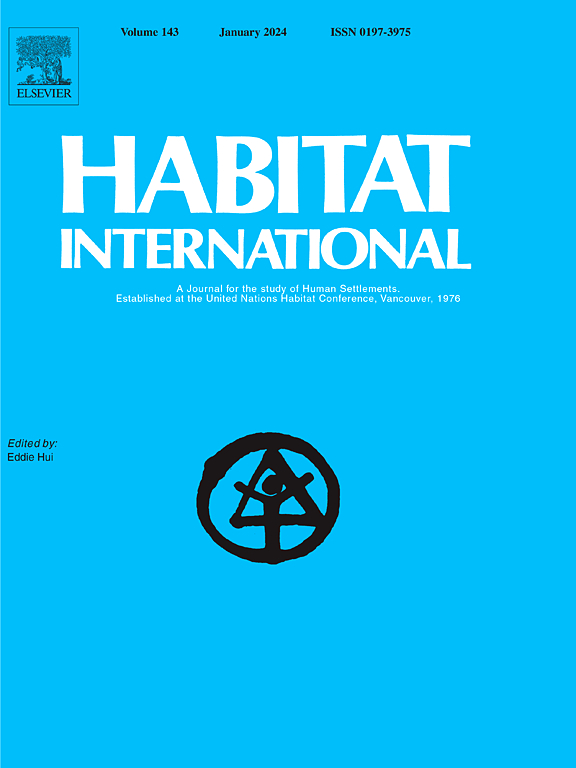Changing spatial inclusion of migrants in Chinese cities: How housing matters
IF 7
1区 经济学
Q1 DEVELOPMENT STUDIES
引用次数: 0
Abstract
Amid mass migration and socio-spatial segregation, social inclusion has been emphasized in urban policy agendas globally. While previous research has explored the inclusion of migrants or different educational groups, few studies have combined education, the important factor influencing housing access, with migration, to explore multi-dimensional inclusion. Drawing on the sixth (Year 2010) and seventh (Year 2020) population censuses and multi-source housing data at the subdistrict level in Guangzhou and Shenzhen, this study investigates migrants' spatial inclusion patterns considering their educational backgrounds and examines the spatially varying relations between inclusion and housing. The findings reveal that from 2010 to 2020, inclusive areas for both less-educated and educated migrants in the two cities experienced an outward expansion. While crowded housing hindered spatial inclusion, with the strongest effects usually observed in Guangzhou's central areas but shifting from Shenzhen's central areas to urban peripheries during 2010–2020, tenure mix facilitated it, particularly in the two cities' suburban areas. Guangzhou exhibited distinct institutional powers, with right-of-use housing contributing to higher inclusion. However, Shenzhen was significantly shaped by market forces, supplemented by institutional and informal influences, with commodity housing, affordable housing, right-of-use housing, resettlement housing, and urban villages related to different dimensions of inclusion in distinct areas. This study contributes to the discourse on social inclusion by broadening its dimensions and provides valuable insights for promoting inclusive cities through housing policymaking.
中国城市流动人口空间包容性的变化:住房问题
在大规模移民和社会空间隔离的背景下,全球城市政策议程一直强调社会包容。虽然以往的研究探讨了移民或不同教育群体的包容性,但很少有研究将影响住房准入的重要因素教育与移民结合起来,探索多维包容。本文利用广州和深圳第六次(2010年)和第七次(2020年)人口普查和多源街道住房数据,考察了不同教育背景下流动人口的空间包容模式,并考察了包容与住房之间的空间变化关系。研究结果显示,从2010年到2020年,两个城市的受教育程度较低和受教育程度较高的移民包容区都经历了向外扩张。虽然拥挤的住房阻碍了空间包容,但在2010-2020年期间,广州中心地区的影响最为明显,但从深圳中心地区向城市边缘转移,租住权混合促进了空间包容,尤其是在两个城市的郊区。广州表现出明显的制度权力,住房使用权有助于提高包容性。然而,深圳在很大程度上受到市场力量的影响,同时也受到制度和非正式影响的补充,商品住房、经济适用房、使用权住房、安置住房和城中村在不同地区与不同维度的包容性相关。本研究拓宽了社会包容的维度,有助于对社会包容的论述,并为通过住房政策制定促进包容性城市提供了有价值的见解。
本文章由计算机程序翻译,如有差异,请以英文原文为准。
求助全文
约1分钟内获得全文
求助全文
来源期刊

Habitat International
Multiple-
CiteScore
10.50
自引率
10.30%
发文量
151
审稿时长
38 days
期刊介绍:
Habitat International is dedicated to the study of urban and rural human settlements: their planning, design, production and management. Its main focus is on urbanisation in its broadest sense in the developing world. However, increasingly the interrelationships and linkages between cities and towns in the developing and developed worlds are becoming apparent and solutions to the problems that result are urgently required. The economic, social, technological and political systems of the world are intertwined and changes in one region almost always affect other regions.
 求助内容:
求助内容: 应助结果提醒方式:
应助结果提醒方式:


